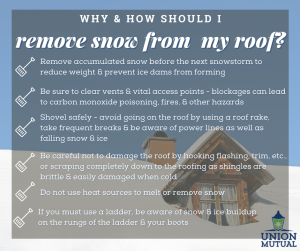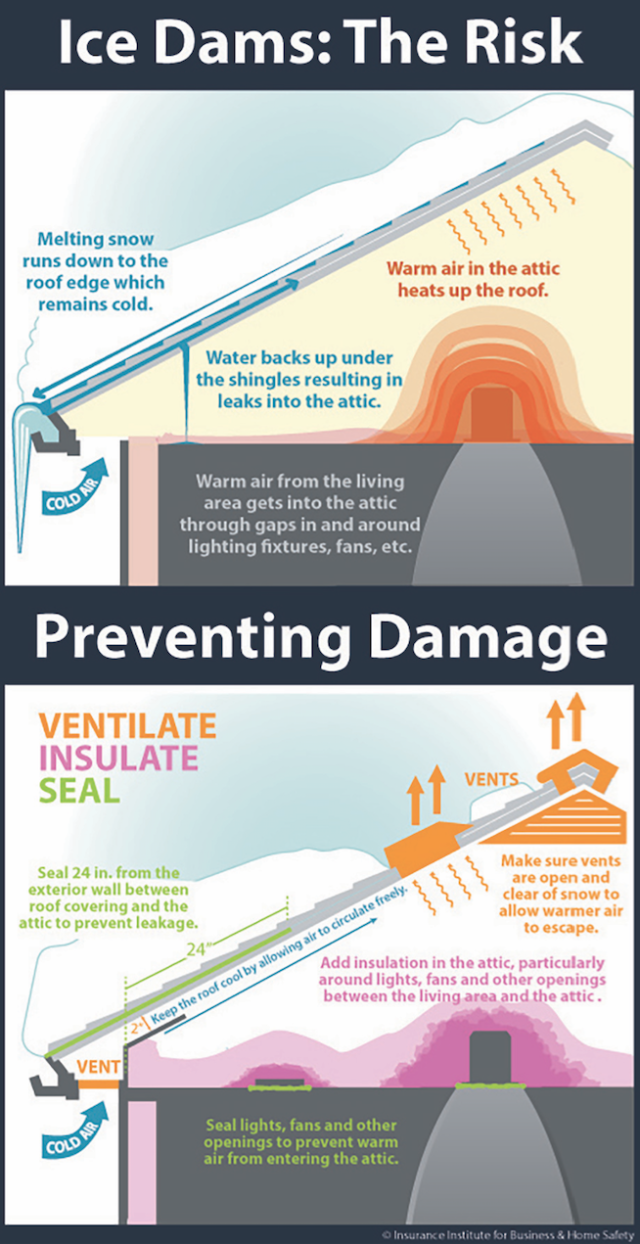Ice Dams – The Hidden Danger of Ice Buildup
While ice can be pretty, especially when glistening in the winter sunshine or carved into a fancy sculpture, it can also lead to of the most devastating causes of property damage – when it forms an ice dam.
What is an ice dam?
Ice dams occur when the warm air from your home rises to the roof, causing any accumulated snow to melt. The melted snow travels down the roof slope and refreezes at the eave or gutter line, creating a dam which causes water to back up. As more water backs up, it can penetrate under the shingles and begin to leak into your home. Damage from water leaks will appear in the ceiling, walls, flooring, and if not properly repaired, could lead to a mold issue – a costly headache and unsafe situation for any property owner.
How can I prevent an ice dam?
Safely removing snow from the overhang area of your roof and keeping your roof cold are the most effective ways to prevent the formation of ice and the resulting backup of water. In many homes, heat escapes through the ceiling and attic. Using caulk or foam, be sure to seal any air leaks that would allow warm air to penetrate into the attic. Having an adequate amount of insulation in your attic can also help keep your attic and roof cool – 12″-14″ of insulation is generally recommended.
Is your home properly ventilated?
Attic ventilation draws in cold air and pushes out hot air, which cools the attic and the roof. Install soffit vents on the underside of the overhang by the eaves to further increase ventilation.
How do I remove snow from my roof?

Additional Resources:
Insurance Institute for Business & Home Safety: Ice Dams: Prevent Them and Your Roof Will Thank You
This Old House: How to Get Rid of Ice Dams
National Weather Service: Preventing Roof Ice Dams




